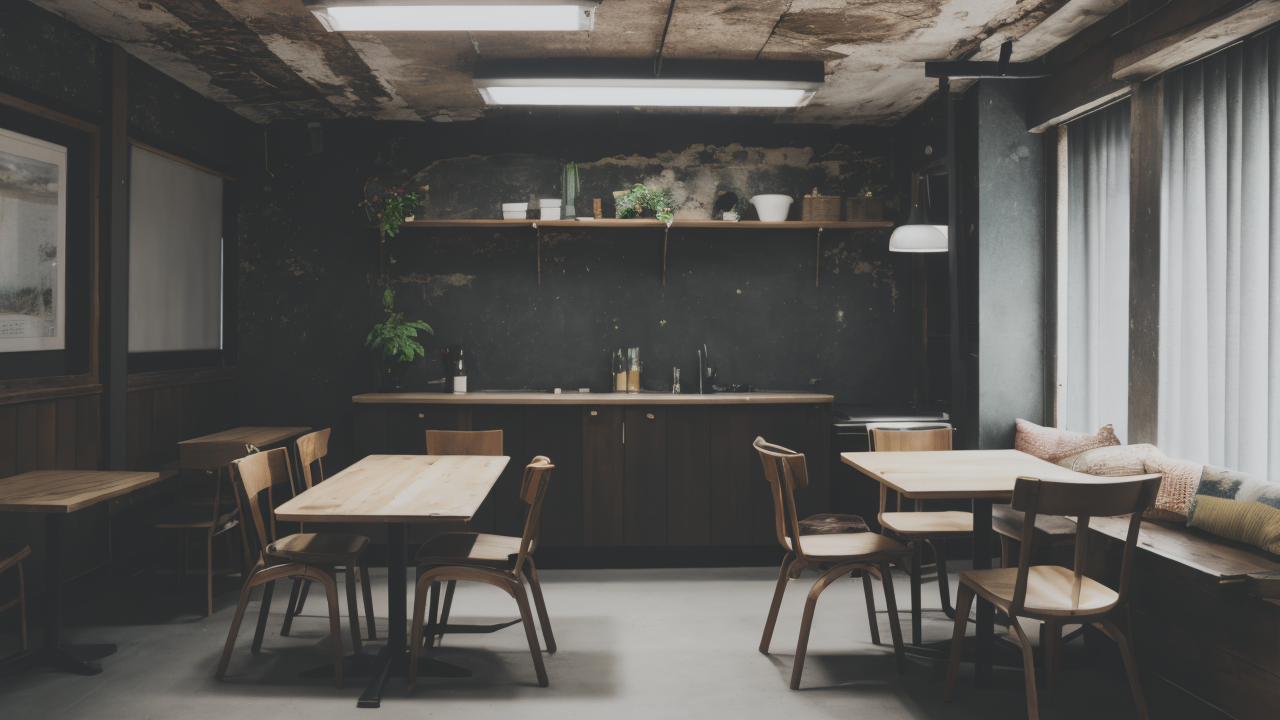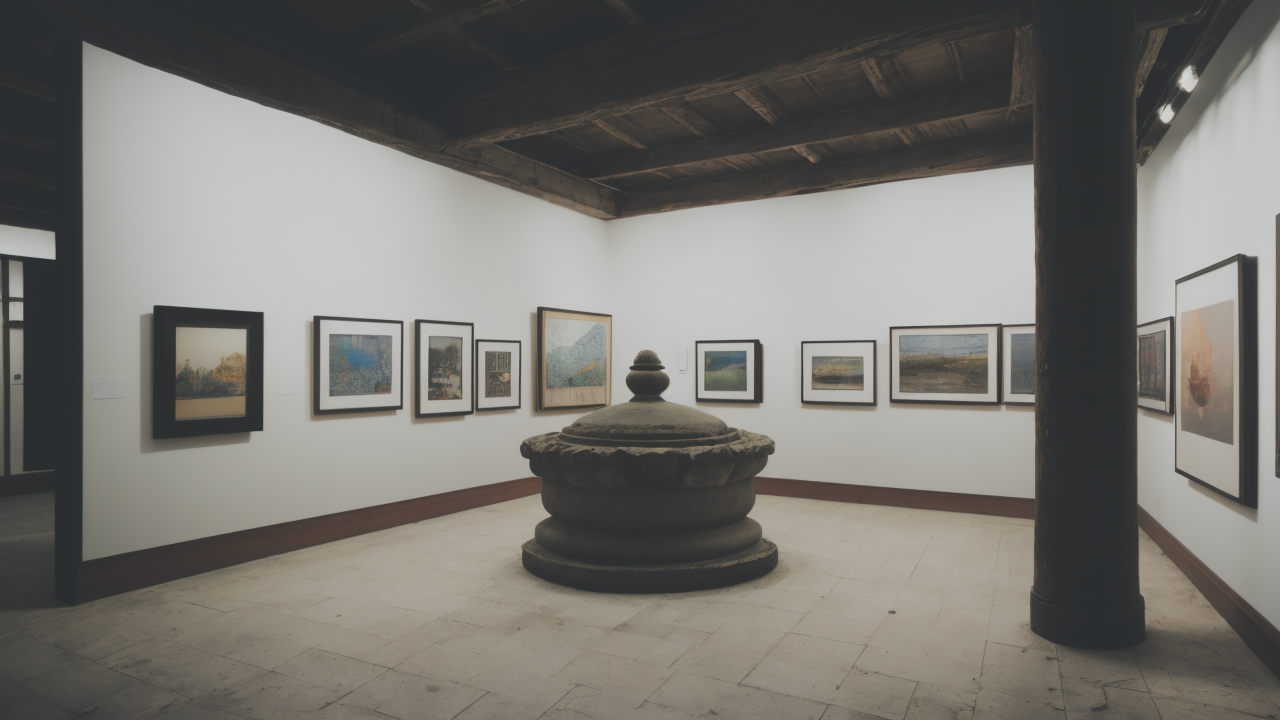
The Power of Simplicity: Exploring Minimalist Drawings in American Contemporary Art
Unveiling the Wabi-Sabi Aesthetic: Understanding Its Origins and Appeal
The Roots of Wabi-Sabi in Japanese Culture
Wabi-sabi is a Japanese aesthetic that finds beauty in imperfection. It has deep roots in Zen Buddhism. The concept emerged from tea ceremonies in 16th century Japan. Wabi-sabi values simplicity, naturalness, and the effects of time on objects.

Key aspects of wabi-sabi include:
- Asymmetry
- Roughness
- Simplicity
- Economy
- Austerity
- Modesty
- Intimacy
- Appreciation of nature
These elements reflect the transient nature of life. Wabi-sabi embraces the natural cycle of growth and decay. It finds charm in worn, aged objects and imperfect forms.
In Japanese culture, wabi-sabi is more than just an art form. It's a way of life that promotes mindfulness and presence. It teaches us to find beauty in everyday moments and objects.
Why Wabi-Sabi Art Resonates with American Audiences
Wabi-sabi's appeal in America comes from its contrast to perfectionism. In a culture obsessed with youth and flawlessness, wabi-sabi offers a fresh view. It allows people to embrace imperfections in themselves and their surroundings.
Americans find comfort in wabi-sabi's authenticity. It provides an antidote to mass-produced, disposable goods. The aesthetic aligns with growing interests in:
- Mindfulness and meditation
- Sustainable living
- Minimalism
- Artisanal and handcrafted products
Wabi-sabi art reminds us to appreciate the present moment. It encourages a slower, more thoughtful approach to living. This resonates with those seeking balance in a fast-paced world.
The aesthetic also appeals to those tired of consumerism. It values quality over quantity, and history over novelty. This aligns with a shift towards more meaningful, sustainable lifestyles.
Transforming Spaces: How Wabi-Sabi Art Influences Interior Design Trends
Wabi-Sabi Art in Home Decor: Blending Functionality with Aesthetics
Wabi-sabi has made a big impact on home decor trends. It offers a way to create spaces that are both beautiful and livable. The aesthetic favors natural materials and muted color palettes.

Key elements of wabi-sabi home decor include:
- Handmade ceramics with visible imperfections
- Weathered wood furniture
- Natural fabrics like linen and cotton
- Vintage items with a patina of age
- Plants and organic elements
These elements create a sense of calm and connection to nature. Wabi-sabi homes feel lived-in and welcoming. They celebrate the beauty of everyday objects and materials.
The style also promotes decluttering and mindful consumption. It encourages us to keep only what is necessary or brings joy. This aligns with popular minimalist approaches to home organization.
Incorporating Wabi-Sabi Elements in Commercial Design
Wabi-sabi principles are increasingly influencing commercial spaces. Designers use them to create environments that feel authentic and inviting. This trend is evident in:
- Cafes and restaurants
- Hotels and resorts
- Retail stores
- Office spaces
In these settings, wabi-sabi elements create a sense of warmth and uniqueness. They offer a respite from sleek, corporate aesthetics often found in commercial spaces.
Wabi-sabi commercial design might feature:
- Exposed brick or concrete walls
- Reclaimed wood furniture
- Handmade tiles with slight variations
- Natural, uneven textures
- Soft, diffused lighting
These elements create spaces that feel human and approachable. They invite customers and employees to slow down and be present. This can enhance experiences and foster connection.
Exhibiting Wabi-Sabi: U.S. Shows and Exhibitions That Highlight the Movement
Spotlight on Major Exhibitions and Their Impact
Several U.S. exhibitions have brought wabi-sabi art to the forefront. These shows have introduced the aesthetic to wider audiences. They've sparked conversations about beauty, imperfection, and cultural exchange.

Notable exhibitions include:
- "The Beauty of Wabi-Sabi" at the Asian Art Museum in San Francisco
- "Imperfect Beauty: Wabi-Sabi in Japanese Art" at the Freer|Sackler in Washington, D.C.
- "Embracing Imperfection" at the Minneapolis Institute of Art
These exhibitions showcase a range of wabi-sabi art forms. They feature ceramics, paintings, textiles, and more. Many include both historical and contemporary works.
The impact of these exhibitions extends beyond the art world. They've influenced design trends and consumer preferences. They've also promoted cross-cultural understanding and appreciation.
Navigating the Wabi-Sabi Movement: What's Next for Art Collectors and Designers?
The growing interest in wabi-sabi art presents new opportunities and challenges. For collectors, it offers a chance to explore a rich aesthetic tradition. It also requires a shift in perspective on value and beauty.
Collectors interested in wabi-sabi might consider:
- Learning about the philosophy behind the aesthetic
- Exploring both traditional and contemporary wabi-sabi artists
- Focusing on the story and process behind each piece
- Embracing imperfections as part of an object's charm
For designers, wabi-sabi offers a way to create more meaningful, sustainable spaces. It encourages a focus on quality materials and timeless design. Designers might incorporate wabi-sabi by:
- Using natural, locally-sourced materials
- Embracing asymmetry and organic forms
- Highlighting the beauty in worn or aged items
- Creating spaces that evolve and improve with use
As the movement grows, we can expect to see more wabi-sabi influence in various fields. This might include fashion, product design, and even technology. The challenge will be maintaining authenticity as the aesthetic gains popularity.
Ultimately, wabi-sabi offers a valuable perspective in our fast-paced, perfection-driven world. It reminds us to find beauty in the imperfect, incomplete, and impermanent aspects of life.
The future of wabi-sabi in the art world looks promising. As more people seek authenticity and connection, this aesthetic offers a powerful alternative. It challenges us to see beauty in unexpected places and to value the stories behind objects.
For art collectors, this might mean looking beyond traditional measures of value. Instead of seeking perfection, they might prize pieces with unique flaws or signs of age. This shift could reshape the art market and what we consider collectible.
Designers will likely continue to explore wabi-sabi principles in new ways. We might see more emphasis on sustainable materials and processes. There could also be a rise in designs that age beautifully, gaining character over time.
As wabi-sabi gains popularity, there's also a risk of commercialization. The challenge will be to maintain the true spirit of the aesthetic. This means valuing authenticity over mass production and quick trends.
In the end, the wabi-sabi movement offers more than just a new aesthetic trend. It provides a different way of seeing the world. It encourages us to slow down, appreciate imperfection, and find beauty in the everyday.
This shift in perspective has the power to change not just art and design, but how we live our lives. By embracing wabi-sabi, we might find more contentment and less stress in our pursuit of beauty and meaning.


